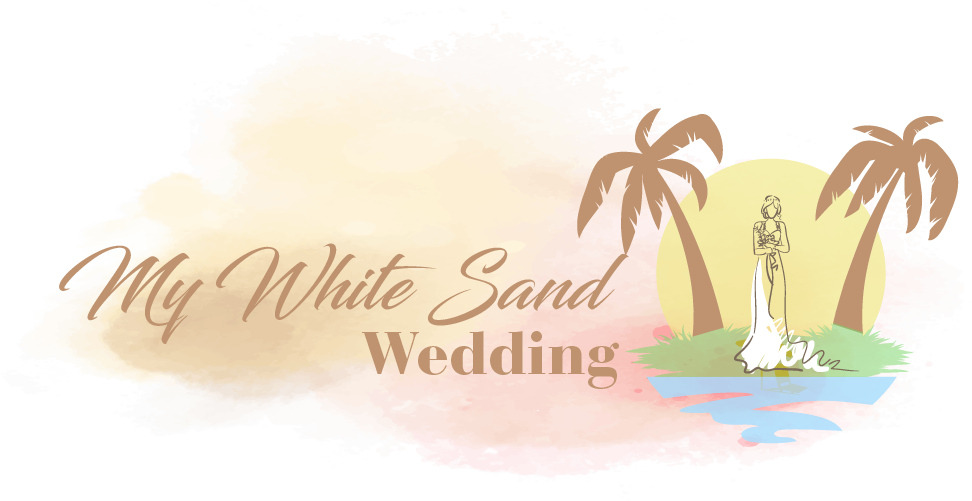Wedding accessories are versatile: You can opt for wedding gloves, get a tiara, or wear jewelry on your big day. Nonetheless, no accessory makes you feel complete and beautiful like a wedding veil.
At their inception, wedding veils were meant to protect the bride from spirits that could interfere with her happiness. Modern brides still wear veils as an elegant addition to their bridal ensemble. When shopping for a wedding veil, you may wonder whether to opt for a long or short veil.
Should you wear a long or short wedding veil?
Some people recommend longer wedding veils for specific reasons, while others think shorter veils work best. Ultimately, the choice of whether to wear a long or short veil comes down to your needs and preferences, such as your hairstyle, wedding gown design, and the formality of the wedding.
Read on as we uncover details on how long a veil is supposed to be, how long you should wear your wedding veil, and the different types of wedding veils.

Table of Contents
Should You Choose a Long or Short Wedding Veil?
The veil’s length and comfort levels are some challenges new brides face when deciding on the type of veil to choose.
Would a long cathedral veil be the best, or should I opt for a shorter veil that’s more comfortable to walk in?
Some people recommend longer veils for specific reasons, while others think shorter veils work best. Ultimately, whether to wear a long or short veil comes down to your needs and preferences.
Wedding veils come in three different lengths. Let’s take a look.
Long Bridal Veils
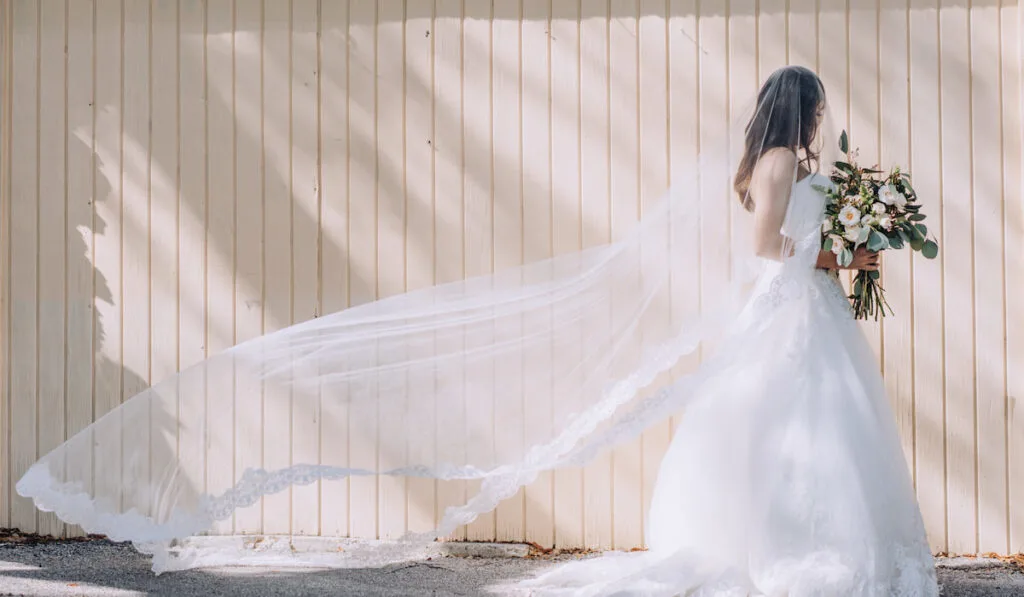
These veils are longer than your wedding dress and touch the floor. A long veil creates a dramatic effect and is the most popular.
Short Bridal Veil
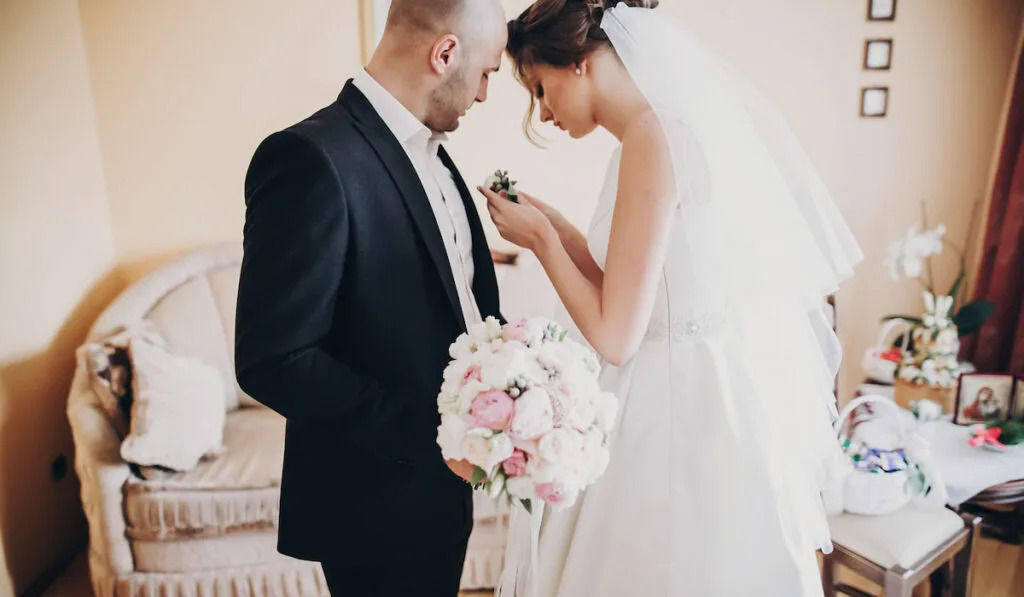
A short bridal veil covers your shoulders down to the elbow. The shortest veil is called a bandeau veil, which covers only the face, and can be made from lace or net.
Medium-Length Veil
A medium-length veil is not common, but it’s comfortable to wear compared to a long veil. It covers the back down to your waist.
It’s essential to listen to your gut feeling and take time when picking up a veil.
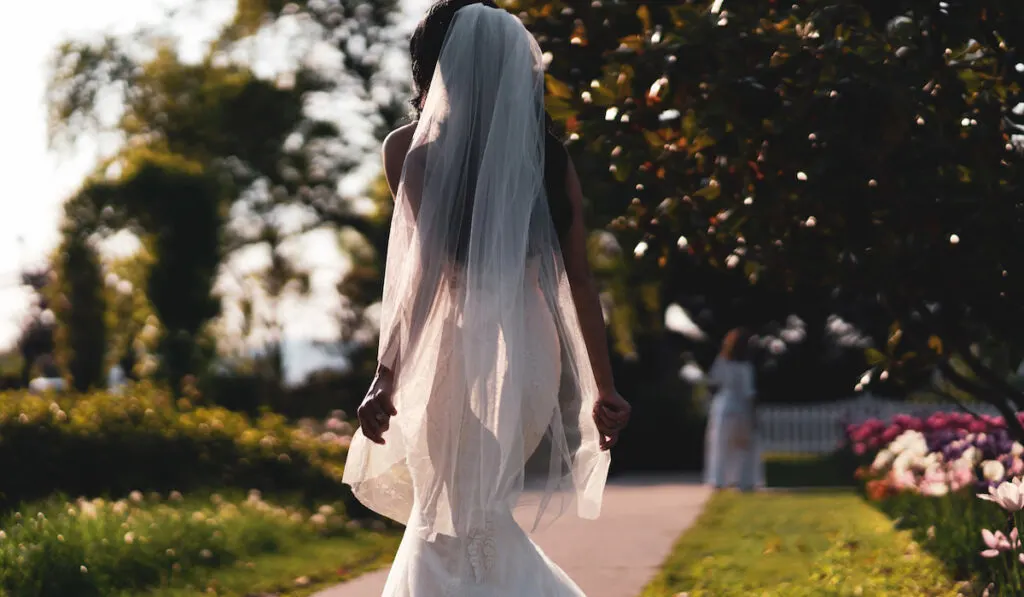
Experts recommend a short or medium-length veil if planning an intimate wedding. A long or cathedral veil works best for a big wedding in a church or outdoors.
Another factor to note is that the length of the veil you choose will also depend on the type and length of the wedding dress. A short dress works best with a short veil, but a princess gown would be better with a long veil.
The trick is to find the right balance of all the bridal ensemble details and choose a veil that matches your style and what you envision for your big day.
How Long Should You Wear a Wedding Veil?
The length of time you choose to wear your wedding veil will depend on your preferences and the type of veil you choose.
You can opt to have the veil on before and during the ceremony. Most brides will choose to remove it when heading to the reception, where there are a lot of interactions with guests and dancing.
Alternatively, you can opt for a birdcage (bandeau) veil that you can wear throughout your big day. Some brides will keep the longer veil for the ceremony and opt for a birdcage style for the reception to maintain the bridal look.
Types of Wedding Veils
Here are some of the common types of wedding veils.
1. Birdcage Veil
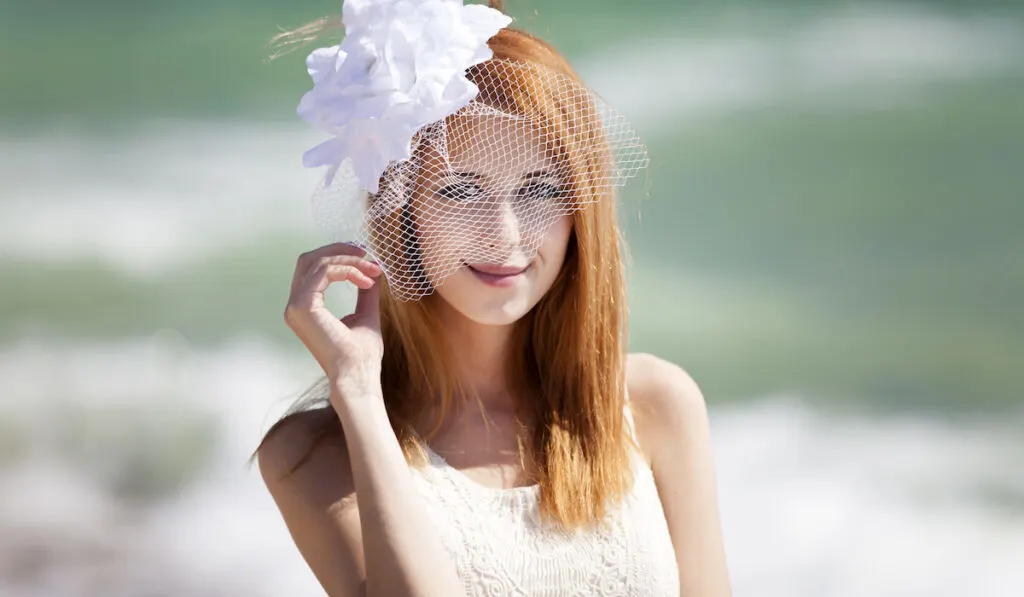
The birdcage veil is a popular veil that falls on the bride’s chin.
Some types of birdcage veils are short and only extend to the eyes of the bride. Birdcage wedding veils are about four to nine inches long.
Most birdcage veils use English netting with big holes to create a dramatic and elegant look.
The birdcage veil suits brides having a low-key and intimate ceremony. Brides looking for a vintage vibe with some sophistication will love the birdcage veil.
2. Blusher Veil
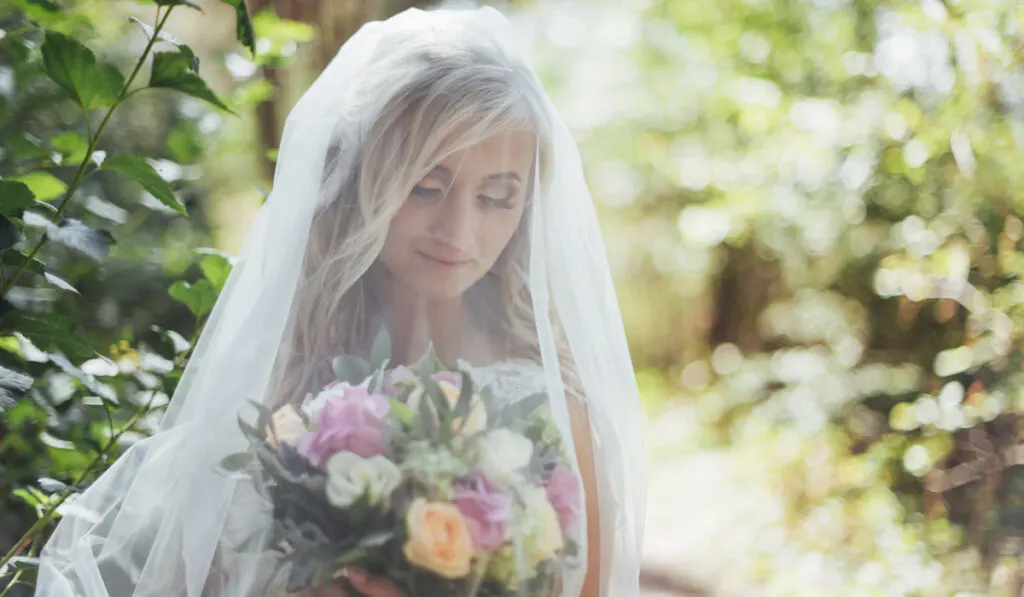
The blusher is considered an extra part of the veil. It covers the bride’s face and falls just above her hands.
Blusher wedding veils were common back in the day, and the groom would lift the veil once the bride got to the top of the aisle.
Although they are not as popular, blusher veils are still a favorite for a few brides. Kate Middleton had a blusher veil at her wedding.
3. Fingertip Veil
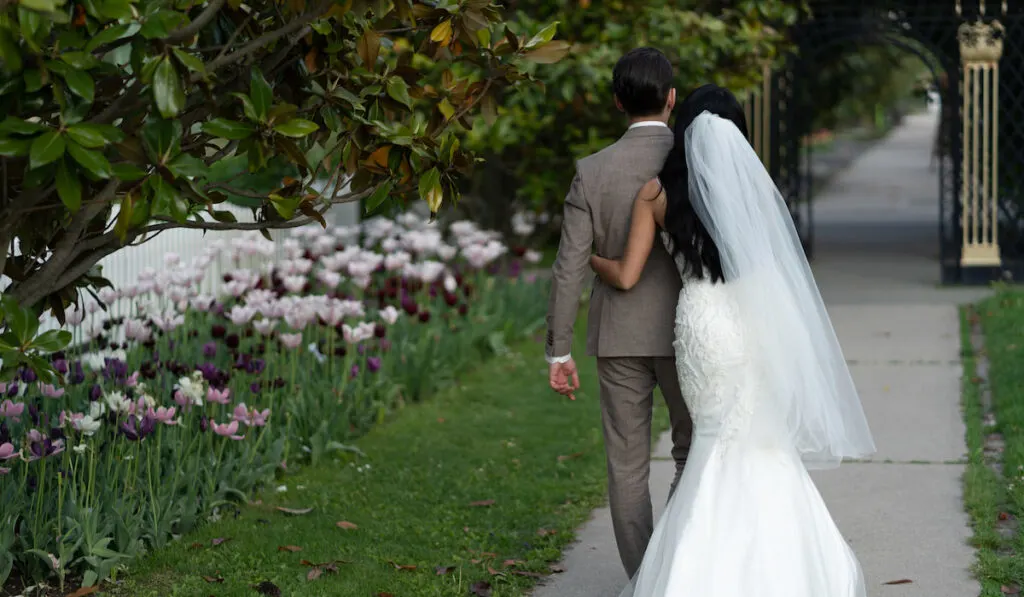
Fingertip wedding veils are also referred to as wrist-length wedding veils.
A fingertip veil works with most body shapes and wedding dress styles. These veils fall slightly beyond the bride’s hips. They are about 36 to 45 inches, most of which are 38 inches long.
4. Chapel Veil
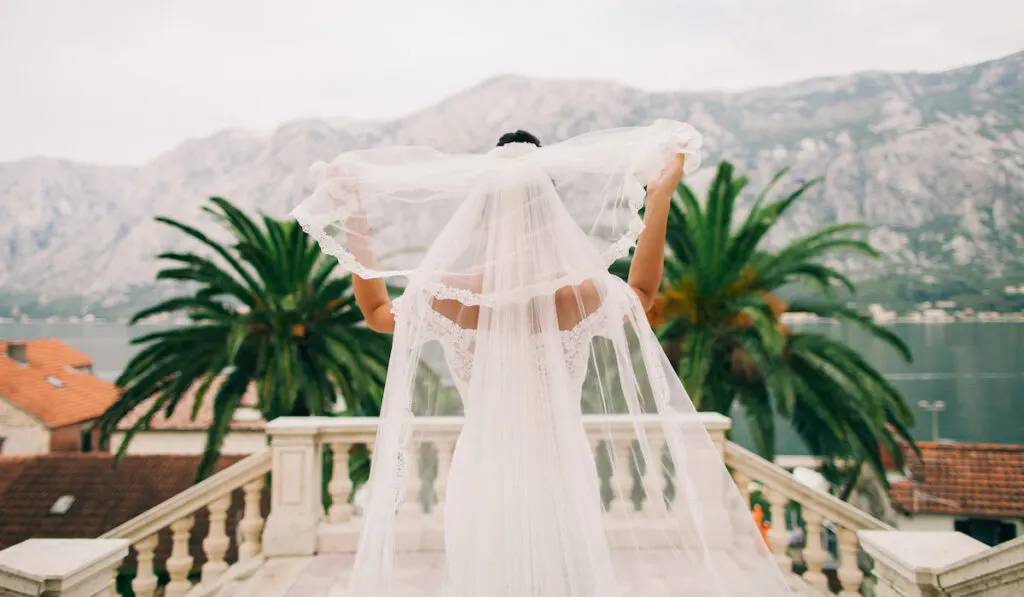
A chapel wedding veil is inches longer than a full-length veil. It’s about 90 inches long, sweeps the floor, and is considered a formal wedding veil style.
Some people may refer to chapel veils as full veils because they can extend beyond the gown’s train by six to ten inches.
5. Cathedral Veil
A cathedral wedding veil is at least 108 inches in length. It’s one of the longest veils that’s meant to portray elegance.
In most royal weddings, like Megan Markle’s wedding, the cathedral veil is extended further as a display of royalty.
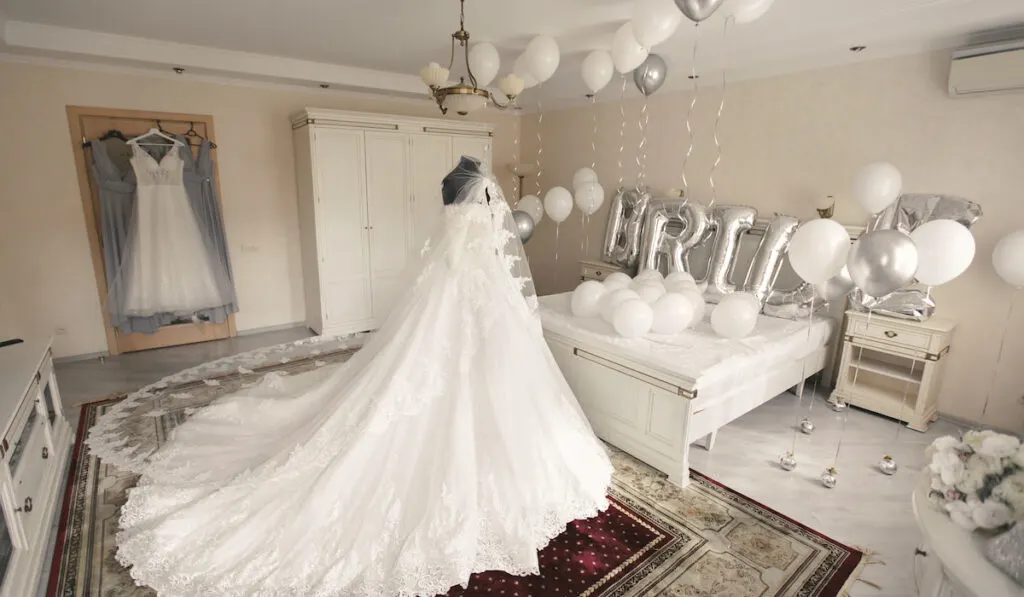
7. Mantilla Veil
Mantilla veils are made from lace, silk, or tulle. The entire veil has a lace edge and a comb under the lace to attach to the bride’s head.
Mantilla veils drape over the bride’s head and are about 36 inches long.
8. Waltz Veil/Ballet Veil
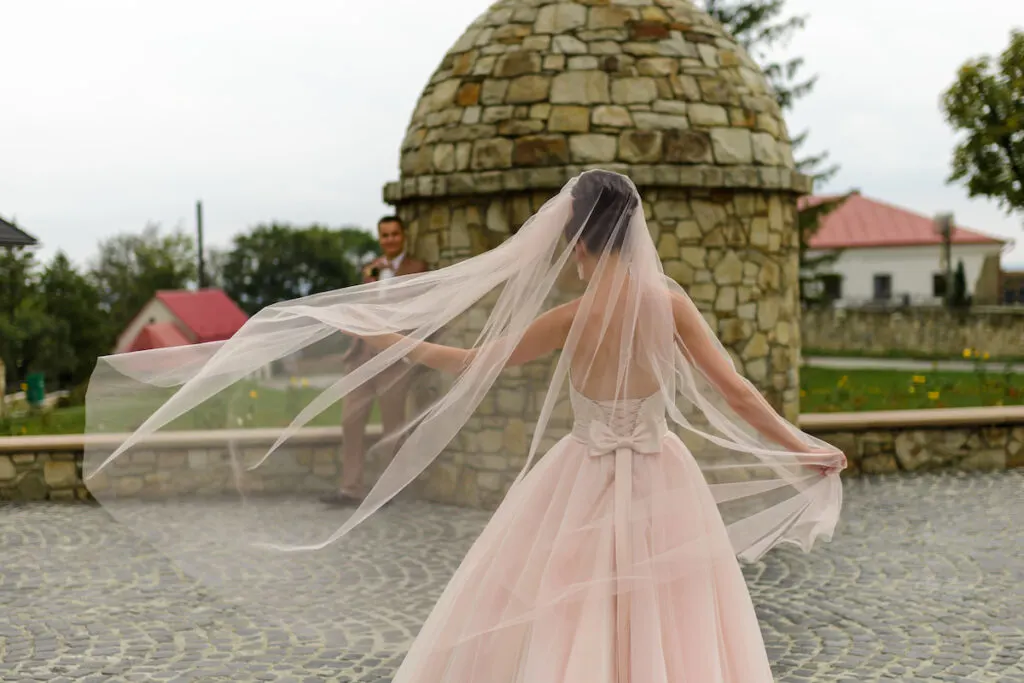
Brides wearing a fitted gown without a train are better suited with a waltz or ballet veil. The veil is about 45 inches long and falls between the mid-calf and knee.
Unlike the cathedral veil, which can be limiting in terms of movement, this knee-length veil works best for brides who prefer to keep their veils on as it gives them the freedom to move without dragging the veil or having guests step on it unknowingly.
Additionally, brides with gowns with a beautiful bodice will love this type of veil as it doesn’t hide the gown’s details.
9. Shoulder-Length Veil
A shoulder-length veil is about 18-24 inches long and falls below or right at the bride’s shoulder.
Modern brides are now opting for a flyaway shoulder veil that is 20 inches long. It falls past the bride’s shoulder and has a semi-formal style.
Most brides opt for this type of veil when their wedding dress has decorations and embellishment that they would love to display.
10. Elbow-Length Veil
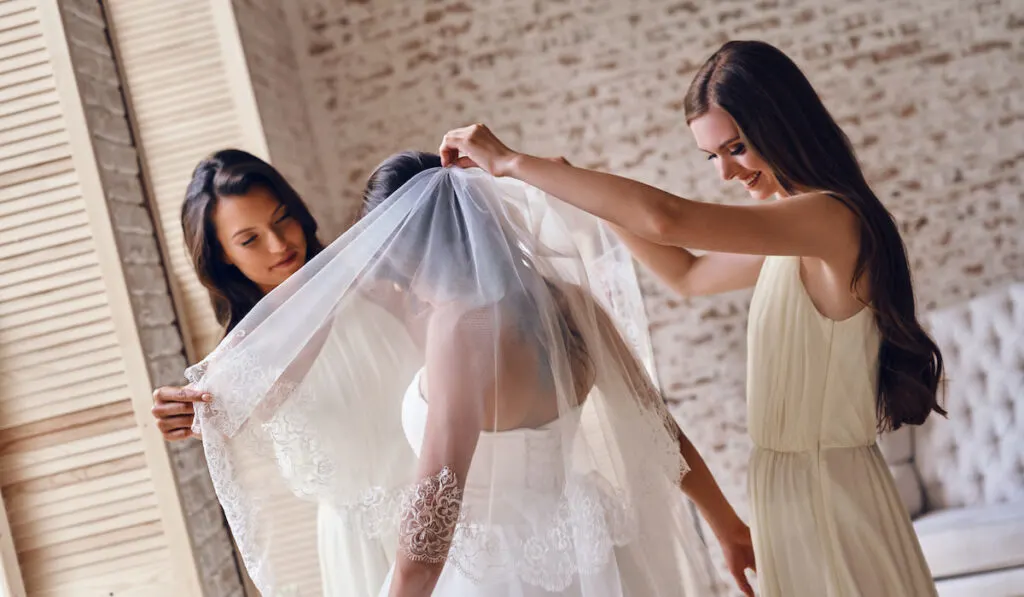
An elbow-length veil is about 25 inches long and extends to the bride’s elbow. It’s not too short like the birdcage veil and not too long like the chapel or cathedral veils.
Brides can opt for multilayered elbow-length veils or stick to the single-tier veil. This type of veil works well with gowns that don’t have a train like a ball gown.
Extra Tips on Choosing a Wedding Veil
Hairstyles also play a significant role in the veil length you choose.
If you’re planning to have your hair in an updo style, avoid shoulder-length veils and wear a veil with a tiara instead. Additionally, if wearing your hair down, get a veil that you can pin to the top of your head.
Remember that your veil shouldn’t overpower your gown but should instead balance it out. If you want your gown to stand out, choose a simple veil. However, wear a simple gown if you opt for a veil with crystals or embroidery.
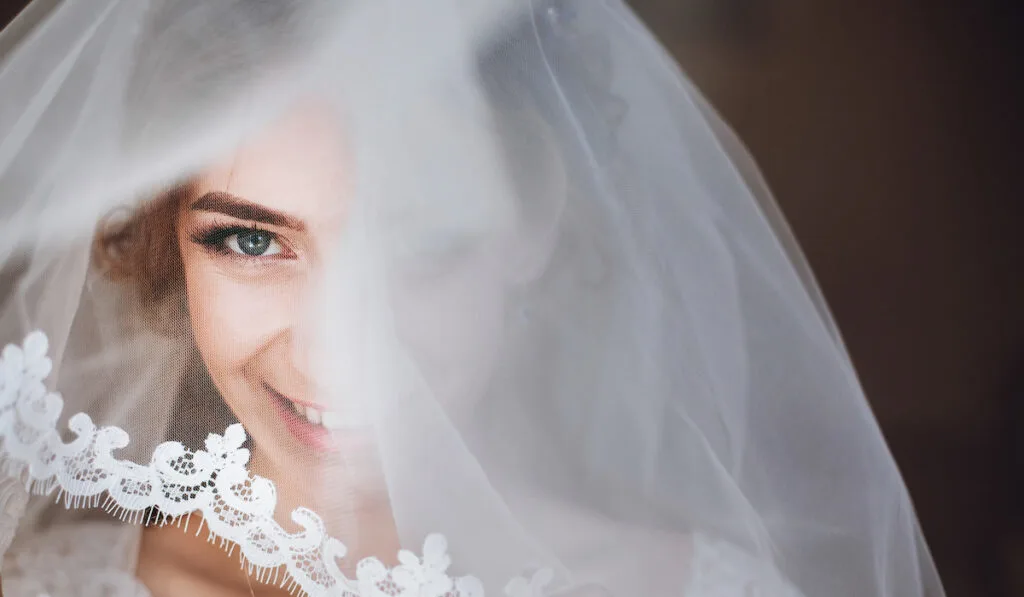
Final Thoughts
There are different wedding veils depending on your preferences, wedding gown, and the kind of ceremony you’re planning, whether intimate or a big wedding. Furthermore, the decision on the length of your veil will also depend on the above factors.
Hopefully, you now know the popular types of veils and which one to choose for your big day.
Resources
- https://www.insideweddings.com/news/fashion/the-brides-complete-guide-to-the-most-popular-wedding-veils
- https://weddingknowhow.com/wedding/how-to-choosing-your-wedding-veil/
- https://alicemay.ie/10-types-of-wedding-veils-explained
- https://www.marthastewart.com/7958118/types-veils-know-now
- https://www.insideweddings.com/news/fashion/how-long-will-you-wear-your-wedding-veil
- https://www.refinery29.com/en-gb/why-do-brides-wear-veils
- https://www.thegownwarehouse.com/history-meaning-wedding-veils/
- https://www.weddingwire.com/wedding-ideas/wedding-veil-meaning
